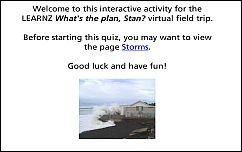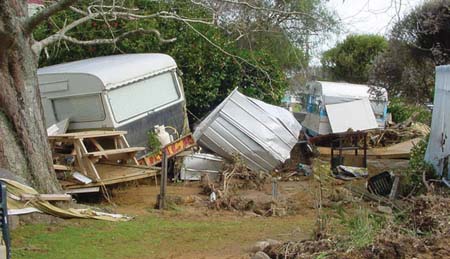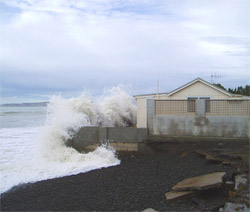What is a storm?
A storm is a disturbance of the atmosphere that can cause strong winds, rain, thunder, lightning, heavy snow and rough seas. A strong wind warning is issued by the MetService when winds of more than 87kph are expected over land.
Hazards from storms include falling trees and poles, torn-off roofs, fast-flowing currents in streams and rivers, flying objects, and slips and flooding. Coastal areas can suffer from storm surges, which are extra-high tides caused by the high winds pushing the sea forward.

Snowstorms
In a snowstorm, the primary concerns are the potential loss of heat, power and telephone service, and a shortage of supplies if storm conditions continue for more than a day. It is important for people living in areas at risk from snowstorms to consider the need for alternative forms of heating and power generation.
Tornadoes
Tornadoes sometimes occur during thunderstorms in some parts of New Zealand. A tornado is a narrow, violently rotating column of air extending downwards to the ground from the base of a thunderstorm. Warning signs include a long, continuous roar or rumble or a fast approaching cloud of debris which can sometimes be funnel shaped.









